Table of Contents
If you’re in the software-as-a-service industry, you’re well aware of how fierce the competition is.
Certain companies appear to operate 24 hours a day. As a result of the massive, legacy solutions that so many businesses have been entangled in, we may question how we can ever begin to achieve that level of success in the first place. The majority of SaaS firms fall somewhere in the center. You’ve got a fantastic solution, you’ve made some success, you’re continually gaining people and satisfying them, but you’re always searching for ways to make it even better.
As we all know, a little inspiration can go a long way, so we’ve compiled some of our favorite lead-generating examples from top SaaS startups who are currently crushing it in the lead generation department.
Lead Generation Case Studies
HipChat

Private chat and instant messaging service HipChat offer one-on-one and group talking and cloud-based file storage, video conferencing, searchable message history, and online image viewing. HipChat is available in both English and Spanish. It started as an obscure startup in California that intended to launch billboard advertising campaigns to raise awareness and drive traffic but rapidly learned that it couldn’t afford to do so due to financial constraints. The cost of a billboard campaign is between $30,000 and $50,000 for four weeks.
Pete Curley, co-founder and CEO of HipChat put on his business pants and considered the situation from the perspective of the billboard supplier. He theorized that there must be instances in which a bidder withdraws their offer or a campaign fails to materialize at the last minute. When that happened, he figured the billboard business would prefer to sell the ad space to someone else rather than let it stay unoccupied and useless for long periods.
On the spur of the moment, he contacted his CBS Outdoor representative and requested to be warned if a situation like this ever occurred again. After a few weeks, that representative phoned him with an opportunity. As a result, HipChat was able to get four weeks of prime-location advertising at 101 North in the San Francisco Bay region. Overall, it spent $6,999 – hundreds of dollars less than the genuine market worth of the facility.
However, the brilliant streak was far from done. With the space secured, it just had a matter of days to come up with an advertisement that would get notice. When it came to marketing, HipChat (a faceless corporation at the time) chose to keep things simple by employing a reasonably popular Internet figure, the Y-U-No guy from Rage Comics, to draw attention to itself. By linking a figure that drivers are familiar with a product they are unfamiliar with, curiosity was aroused.
Results;
- This advertising effort is still producing results. Photographs of the billboard appeared on social media sites such as Twitter, Tumblr, FAIL Blog (in the “Wins” category), and the highly regarded TechCrunch.
- There was a 300 percent increase in internet searches for the company, an influx of new clients, and a warp-speed transformation from three people with a good sense of humor to a modest (and profitable) corporation. Then, in a short period, HipChat was bought by a larger corporation.
Key takeaway;
- The initial cost was significant, but the entire campaign’s enormous success and the resulting flood of new consumers helped cover the CAC more.
- However, Curley was pleased with the conclusion despite not knowing the precise number of consumers who had signed up. Curley was delighted with the outcome at $2 per month per user and an unlimited number of impressions created throughout the four weeks. Customer lifetime value (LTV) increased as well.
Trello
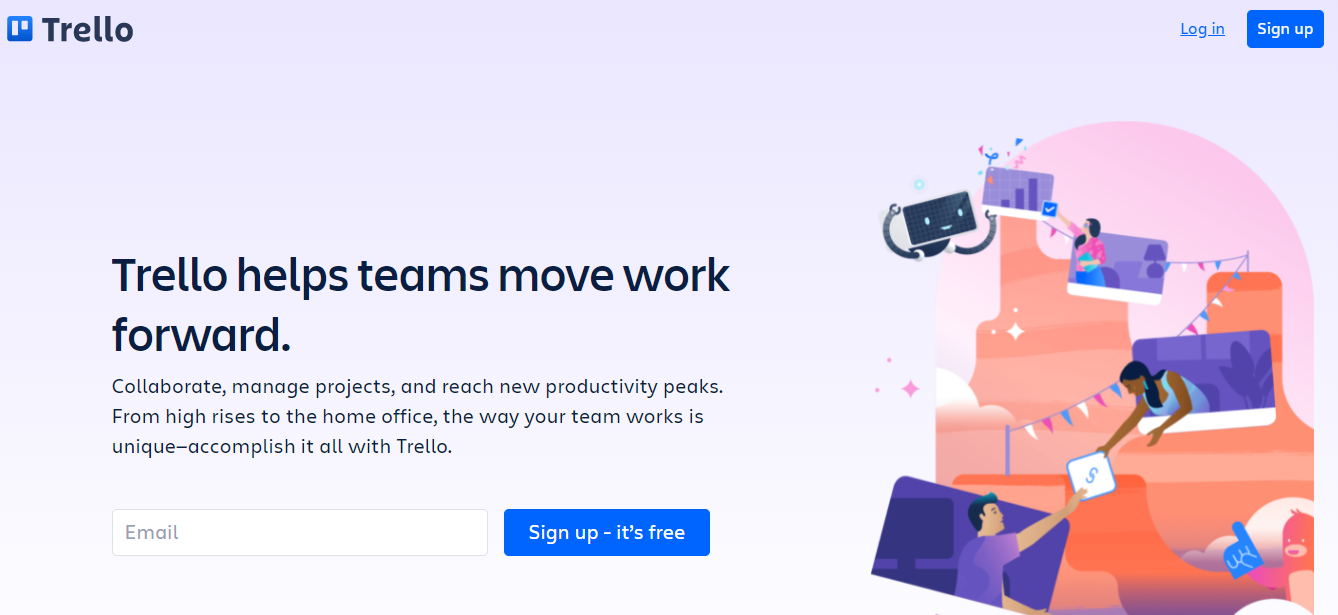
With Trello, you can arrange tasks into boards, making it more straightforward to keep track of everything at a glance. In addition, it’s a free collaboration tool. Finally, because it does not have a marketing strategy, its marketing technique is unique.
Yes, you read that correctly. However, instead of spending its real money on advertising, Trello put it all into developing a solid, user-friendly solution that consumers and companies needed and appreciated.
Results;
- Word-of-mouth evaluation in large numbers. Untold numbers of bloggers and companies have praised the program for how well it has helped them manage chores swiftly and how cost-effective it has been in the process.
- And those who haven’t yet made the transition are at the very least debating whether or not to do so through internet forums.
- Even though Trello’s basic service is free, the firm provides upgrade versions; a Gold package for individuals costs $5 per month or $45 per year. In addition, there are two paid service choices available to businesses.
Key takeaway;
- Trello’s cost per acquisition (CAC) is extremely cheap because word-of-mouth is its primary source of promotion. Additionally, because the overall view of the product is positive, the company’s customer lifetime value (LTV) is high.
- The Trello social media sites and blogs provide productivity tips and tricks. In the past, the company has allowed members to win free, upgraded Trello access for a short period by sharing Trello social media postings or bringing in new members to the service.
- As a result, Trello gains more users without having to invest any additional money. Customers are the ones who perform all of the marketing. The corporation will continue to put its money and efforts into creating a unique product, and everyone will benefit from this strategy.
Intercom
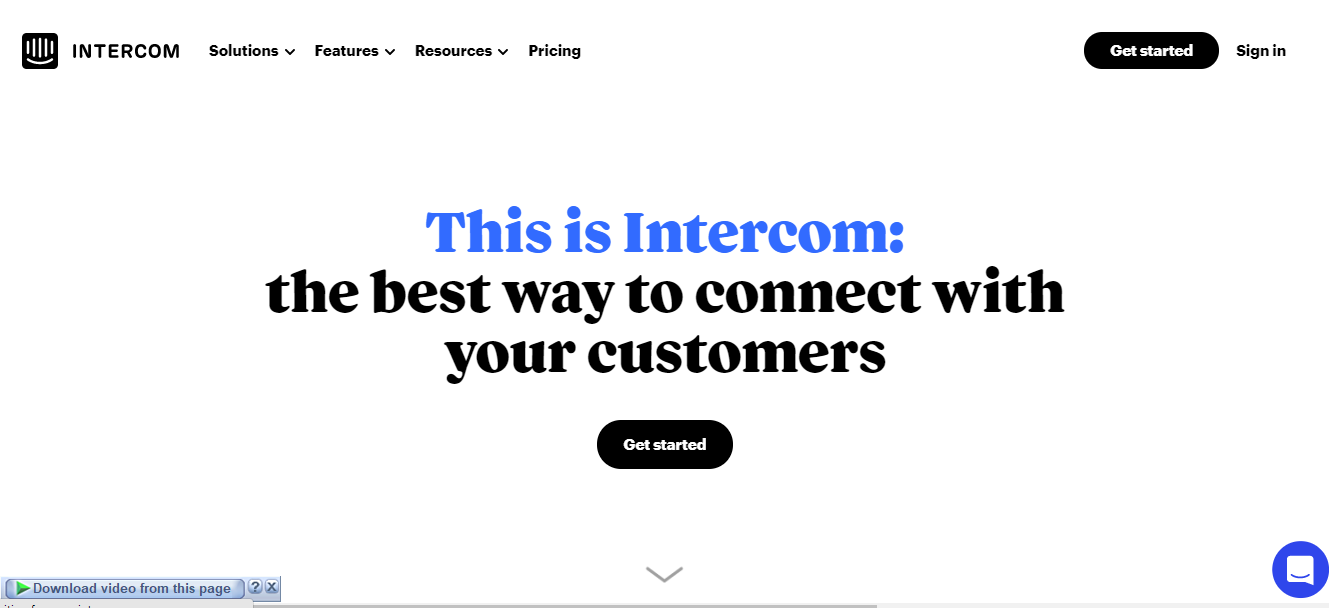
Intercom is a messaging platform that helps organizations communicate with their consumers more straightforwardly. Its business model is a little more… traditional than some of the other SaaS startups on our list. However, the perspective from which it is taken is unique.
Instead of focusing on buyer personas, Intercom focuses on the duties being hired to complete daily. Its guiding idea is that knowing the task helps you discover the right audience. Here’s how it accomplishes this:
First and foremost, Intercom attempts to determine what drives a company’s desire to purchase a particular product. It considers talks with consumers, previous customers, and prospects, and it analyzes any input to detect trends and enhance how it communicates the product to potential customers. This information is used to construct the company’s five job packages, which are as follows: observe, acquire, engage, learn, and support.
Following that, Intercom generates a message guide for each job package it provides, which it then utilizes as a template for creating landing pages for each of those job packages. The questionnaire asks topics such as “What problem are we solving?” and “Why would someone hire Intercom for this job?” “Is your customer support process broken?” For example, each landing page is loaded with SEO strategy and built with aesthetically attractive images to illustrate the query or problem a prospect could be experiencing, such as “Is your customer support process broken?”
Once the problem has been identified, the page transitions to a solution, with a headline such as “Sort it out with Intercom” and a description that describes the work and how Intercom can accomplish it most effectively.
Finally, Intercom prepared a little movie (less than 2 minutes in length) for each job to demonstrate how it completes the task effectively. In addition, each page contains a sticky navigation bar that remains at the top of the browser window. At the same time, viewers scroll down the page, allowing them to quickly access essential areas of the page as they scroll down (like pricing and a call-to-action).
Intercom shows the logos of respected clients and customer photographs accompanied by a quotation detailing how Intercom has benefited their company to establish credibility with visitors and demonstrate the sorts of organizations Intercom serves. In addition, pricing, sign-up, and trial information are prominently displayed, making it a no-brainer to discover. As well as using programs like Google Analytics, Inspectlet, and Optimizely to monitor and evaluate prospect interaction with its sites and test customer engagement hypotheses, Intercom also employs tools such as Google Analytics.
Results;
Through its targeting method, the company receives a wealth of intelligence that allows it to predict which events to attend, sponsor, and speak at to meet the sorts of individuals who might be interested in its product (hence its philosophy).
Key takeaway;
- According to the company, each job-focused landing page that Intercom created had a conversion rate of roughly 5%. Its top-of-funnel traffic has more than quadrupled in the last year and continues to rise weekly, but its conversion rate has remained stable.
- The high customer LTV results from the company’s strategy being so focused on solving particular customer concerns. While the company has invested a significant amount of time and energy in establishing this strategy, the conversion rate helps to offset the company’s CAC.
HootSuite
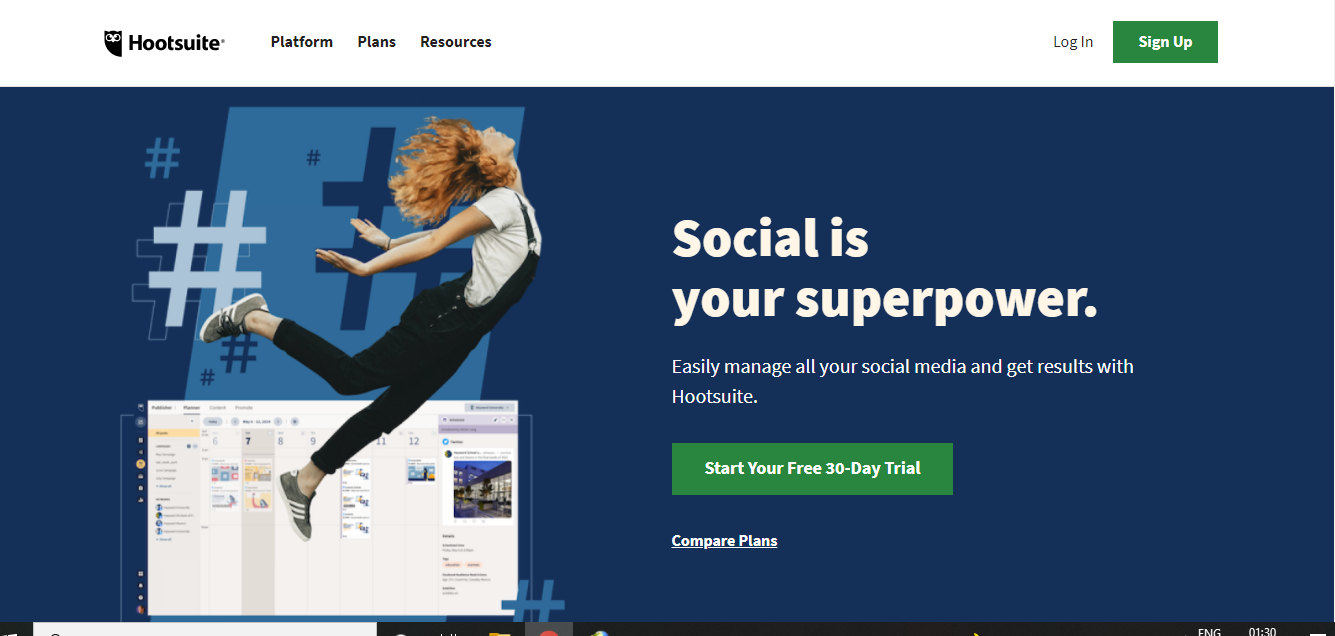
It is a social media management solution that assists businesses in tracking and managing their social media networks. HootSuite is constantly on the lookout for new ways to engage its users, and a pop culture-inspired video campaign helped the company set new personal records.
Due to their enthusiasm for the hit HBO series “Game of Thrones,” the HootSuite team chose to theme their video after the show’s opening sequence and release it just in time for the new season’s debut. A step further, they established a connection between what the program is about and the job that HootSuite does for businesses (helps manage the quiet battles fought between social networks). Fans were entirely on board with it – and adored it.

Results;
- After being released, the video received hundreds of likes and shares on social media networks, and several major news organizations picked it up.
- Over the years, it has had more than 850,000 views and is widely recognized as the most successful piece of material the firm has ever produced.
- The ad, like Eat24, attracted a whole new audience: fans of the HBO series “Game of Thrones.” Although some admirers may already be HootSuite members, this video made an impression on many others who were not yet familiar with the service.
Key takeaway;
- The whole video was made in-house, and HootSuite promoted the film primarily through owned media channels.
- Furthermore, social media sharing was responsible for the majority of the video’s marketing. When taken together, these factors resulted in a relatively low CAC.
Buffer
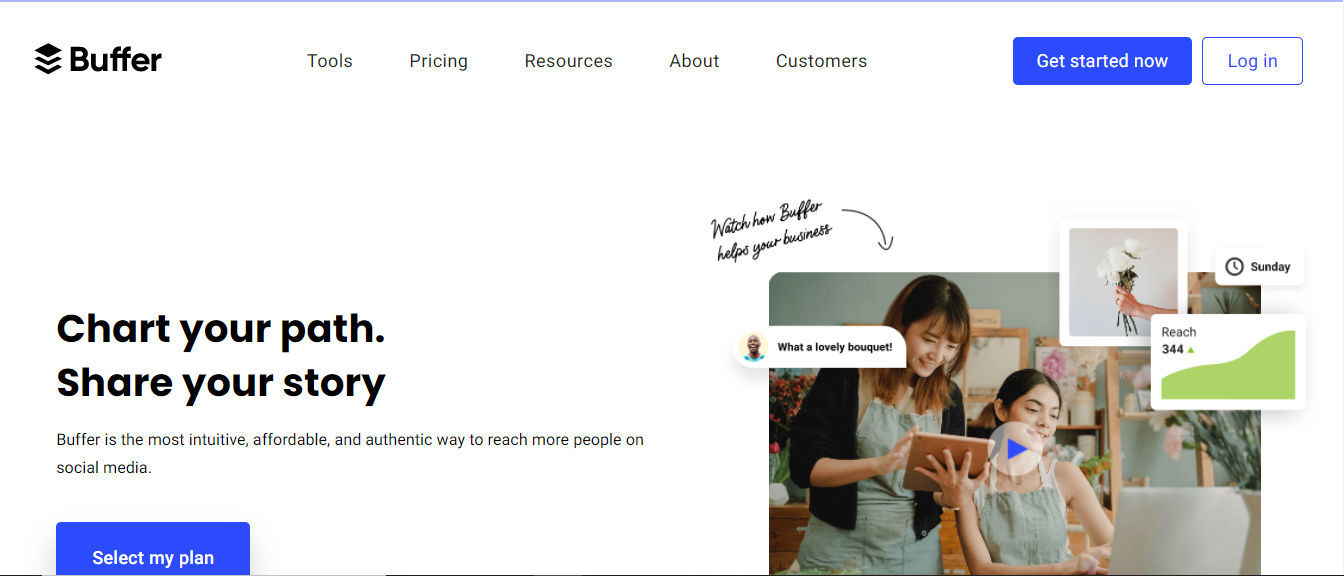
A social media scheduling program allows users to make updates and place them in a queue for distribution throughout the day at peak periods on social media. Its marketing success, like Intercom’s, stemmed from a combination of traditional strategy and a distinctive approach.
Blogging is one of the company’s primary advertising platforms. It mainly wrote on themes relevant to social media when it originally started, but the approach had a small audience. That’s when a talk by Moz co-founder Rand Fishkin triggered an idea for a new marketing strategy. Instead of developing content for potential audiences, Buffer focused on the influencers who were already reaching them with their messages.
What is the new vantage point? Telling stories that elicit an emotional response from those who are already in a captive audience. As a result, we began addressing issues that a broader audience could connect to, such as psychology, creativity, multitasking, life hacks, and other topics.
Buffer posts saw a significant boost in social media shares when the company changed its content strategy. They have more than four times the quantity, increasing their total from 250 to moreover 1,000 individuals.
Buffer decided to take things up a level and start guest blogging to create new partnerships and reach larger audiences. Because of this, the site was able to connect with the friends and followers of key social media influencers. Although the impact was not immediate, Buffer gradually began to see significant growth, with 100,000 new users in less than a year being the most notable example.
Results;
- A modest business with little expertise, no cash, and no connections, Buffer has grown into a significant player in the content marketing industry. It has more than one million users and generates about $4 million in income every year.
- The blog post “30 Things to Stop Doing to Yourself” finally went viral, garnering more than 500,000 Facebook likes, 400 comments, and 20,000 tweets. The firm discovered three things as a result of the post:
-
- A post will be read even if it is extensive (this one had over 1,500 words), provided the layout is simple enough to be scanned over quickly.
- More views will be generated if headlines are written with psychology in mind. In this instance, the title piqued the interest of potential readers, leading them to ponder if the content was relevant to them.
- When content creation, don’t always rely on tried-and-true approaches, and don’t hesitate to experiment with new and unique ideas. You never know when something will become viral on the internet.
Key takeaway;
- Because Leo Widrich, Buffer’s co-founder, did most of the writing for the firm, the company’s CAC is relatively low.
- Buffer did, however, recruit a full-time writer to oversee a second blog, which will focus on the culture of work-life at the company (it provides a unique setting that values exercise, healthy eating, and world travel).
- In only one month, the company got more than 900 applications for the position.
Contently
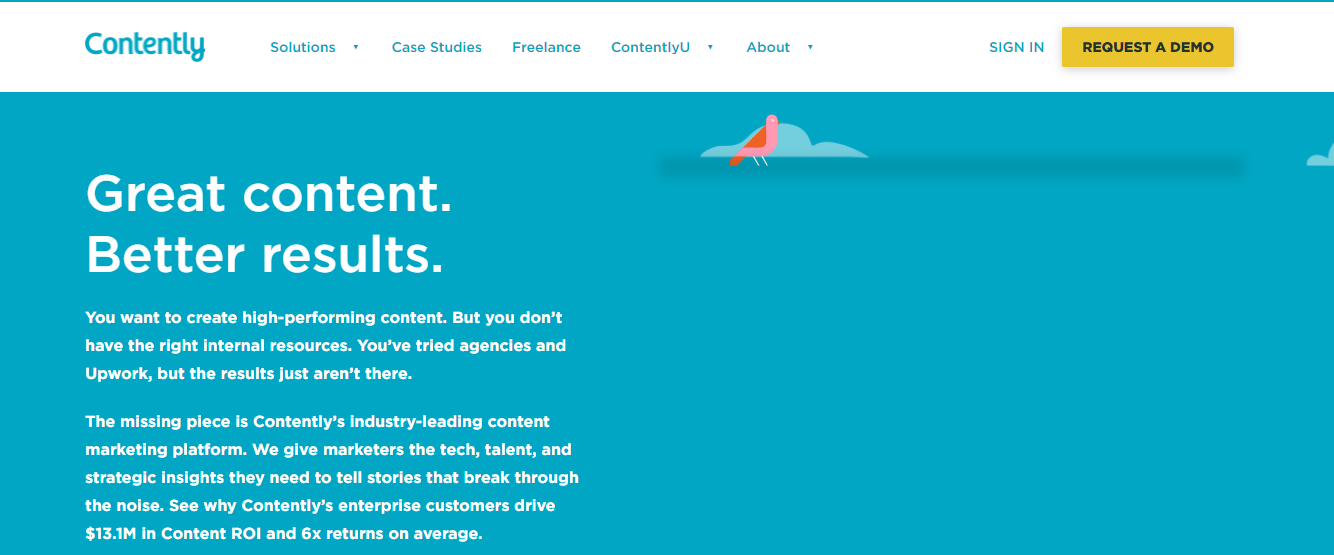
Founded in 2010, Contently is a content marketing firm that has evolved into a full-fledged media organization, connecting freelancers with publishers (often companies) that want material for their websites or marketing initiatives. Some prominent brand luminaries, such as Pepsi, GE, and American Express, have been known to sign long-term agreements with the company in the past. So what was the secret of Contently’s success? It completely re-imagined the remuneration paradigm, paying authors at a far more rate than other media outlets.
To make a profit, Contently licenses its marketplace software to publishers rather than establishing traditional revenue-sharing agreements with writers, under which writers receive a percentage of the prices set by the publishers.
It is a win-win situation. Customers have access to the whole Contently network of freelancers and can choose anybody they want from the pool of candidates. Writers are involved with work for hire, but they do not have to be concerned with managing the process themselves (which Contently does for them). This allows them to devote more time and energy to their art, resulting in higher-quality work. Additionally, Contently has expanded its service to include assisting authors in marketing themselves online and filing their freelance tax returns.
Results;
Contently has attracted many investors, who have assisted the firm in raising millions of dollars. In addition, its economic model establishes new ethical norms for the treatment of authors in general. Furthermore, its pay plan attracts some natural talent, which is one of the reasons it has been able to secure huge companies.
Key takeaway;
Contently has a high customer retention rate, which adds to its customers’ high lifetime value (LTV). In addition, it has the resources and assistance to grow. It intends to include publishing and commercial outcomes into its business model, making it the content marketplace to be modeled after in the future.
Zendesk
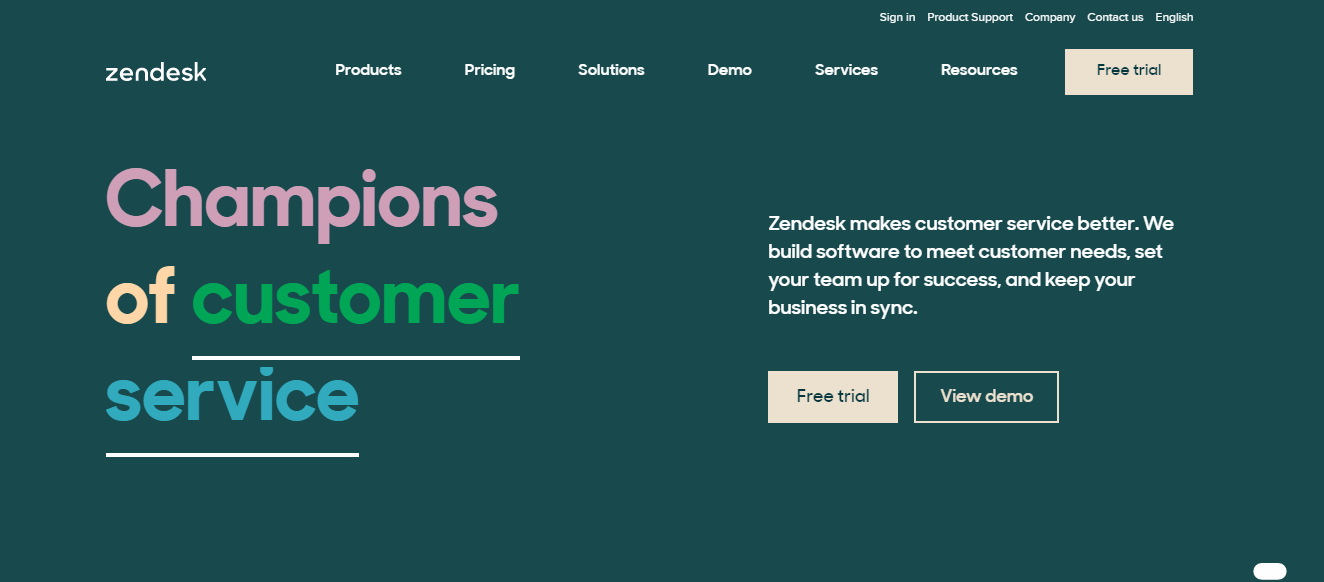
Ticketing self-service capabilities and a myriad of other customer support tools are available through Zendesk’s cloud-based customer service platform. Moreover, it was behind a rather strange marketing strategy that garnered a great deal of attention.
The Zendesk team keeps track of popular search phrases regularly. For example, in the fall of 2013, the team observed a trend: individuals were constantly searching for “Zendesk alternatives” to find other platforms that were similar to Zendesk.
The company’s brilliant marketing team came up with the idea of embracing the search phrase in a significantly… involved way to earn some organic search traffic.
They made a satirical “Making the Band” film and formed a fictitious music group called Zendesk Alternative.
They purchased the domain name, created social media pages for the band on Facebook, Twitter, and MySpace, listed the band name on Bandcamp and Reverberation, used keyword-rich anchor text, title tags, and page content to attract attention, uploaded their video, and eagerly awaited the public response.
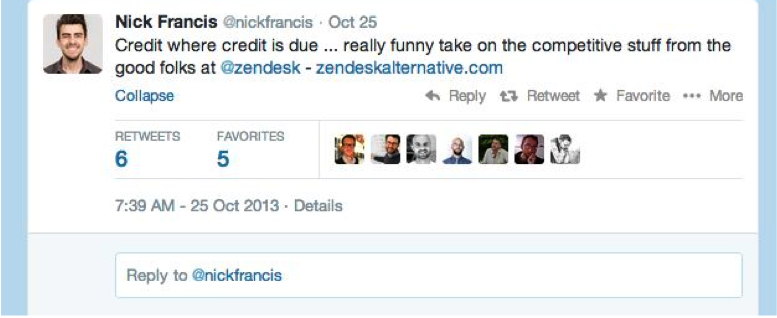
Results;
- The CEO of Helpscout (Zendesk’s main rival at the time) sent out a congratulations tweet shortly after Zendesk was ranked first in the rankings, only a few days after the company’s inception.
Key takeaway;
- The spoof website, zendeskalternative.com, converted at a rate that was 95 percent greater than the actual website. It was launched in October 2013 and had closed five sales by April of this year.
- Not only did it triumph in Google’s search engine rankings, but it also won over the hearts of customers by poking fun at the competitors with elegance and grace.
- The amount of time, money, and effort that went into the campaign almost certainly raised its CAC, but the rise in recognition more than made up for it, and customer LTV improved as a result.
- A few SaaS companies’ most common marketing mistakes include concentrating too much on software and not enough on service and results, failing to delight existing customers; unnecessarily increasing CACs; not maximizing customer LTV, and following conventional marketing models without putting in place forth any original thought.
- Seven examples of great marketing strategies successfully avoid the traps and demonstrate that you do not require a large budget or a strong position in the market to make your way to the top of the marketing food chain.
- The ability to compete with even the most successful opponents is enhanced by having a good sense of humor, being creative, and thinking unconventional ways.
GrooveHQ
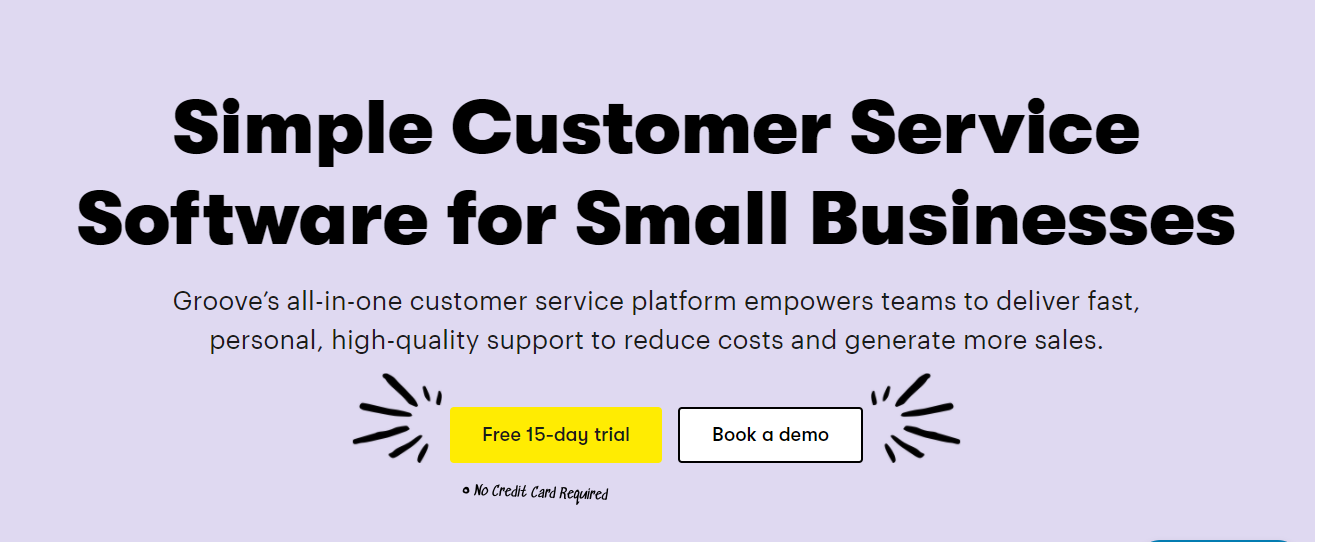
This company was seeking the ideal pricing approach that would increase conversions and revenues. It experimented with a variety of pricing structures before settling on one that worked.
This pricing approach resulted in a 25 percent increase in revenue. This was accomplished by using multiple A/B tests and the adjustment of the price page and pricing plans.
It didn’t end there, though. They went one step further and included a comparison graphic, which helped to raise the conversion rate by another 16 percent:
Alex put a lot of time and effort into developing a pricing mechanism for GrooveHQ that successfully converted customers.
Results;
- Because of changes to its price page, GrooveHQ boosted the number of people who signed up for a free trial by 358 percent and increased revenue by 25 percent. However, SaaS firms are frequently confronted with a price difficulty.
Key takeaway;
- To find out what works best for your software, conversion rate optimization should be the primary focus of your SaaS company’s efforts.
- For a software-as-a-service firm, there is no right or incorrect pricing model. Therefore, it is necessary to experiment to determine your company’s pricing plan.
- One of the most effective methods of increasing conversions is to provide a price comparison table that validates your pricing (whether it is low or expensive).
Mention
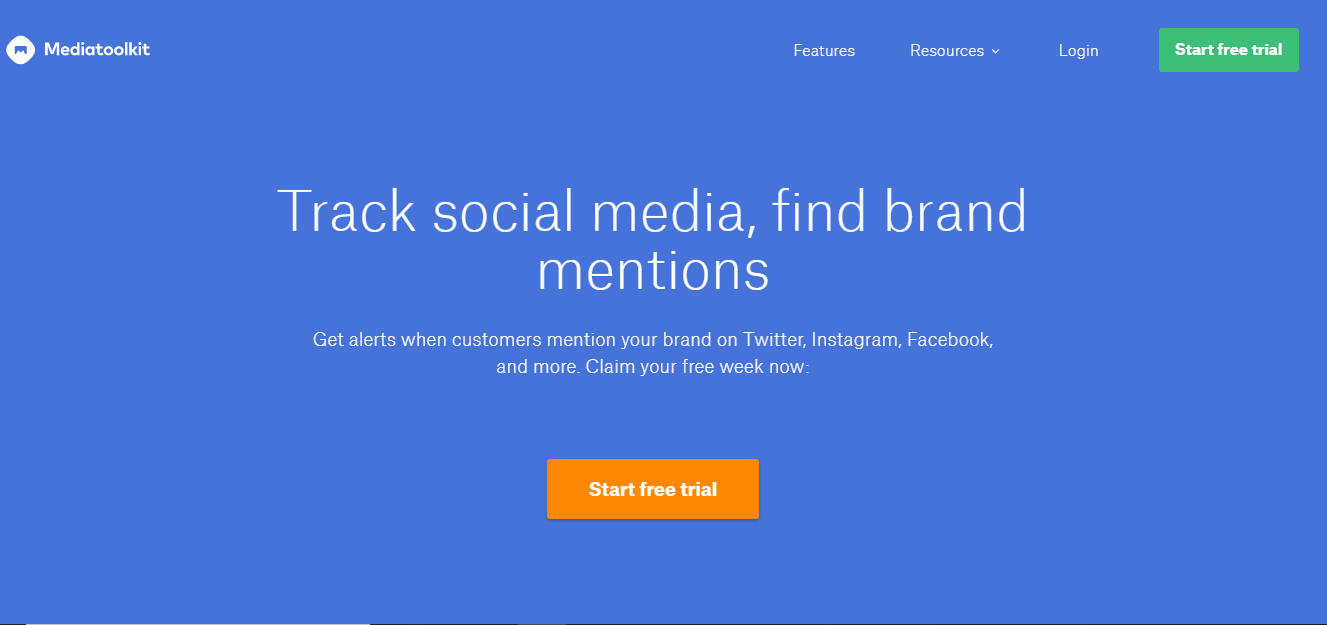
Customer churn is a significant problem for SaaS businesses, particularly when acquiring new customers is difficult and expensive. Customers who are new to the program may use it quickly before ceasing to use it for any reason. Mention dealt with a similar problem, so the company began gathering data on why customers left the service.
The company previously mentioned categorized its consumers based on their membership status. It gave priority to customer demands from the most valued users, who were more likely to remain loyal to the product over time. All support tickets have been assigned to the relevant team, which ensures that all tickets are responded to as quickly as possible:

The support team began responding to support tickets in batches every four hours, starting with the first batch. This simplified their customer care personnel, allowing them to respond to customers faster.
According to the data, users who signed up for a free trial were more likely than others to upgrade to a premium plan. As a result, more emphasis was placed on free trial users than on subscribing to the free program. In addition, Mention sends out emails with case studies and success stories to those who signed up for their free trial:

Customers that subscribed to premium programs received Pro Tips in the form of:

A MasterClass webinar was held to demonstrate to users (both free and paid) the potential of what Mention can accomplish.
Results;
- Due to these user engagement strategies, users’ churn was reduced by 22 percent in less than three months. During the first three months, the aim was to minimize churn by 20%. As a result, the MMention accomplished its objective far before the three-month deadline, a significant success.
Key takeaway;
- User education is essential in demonstrating what your product is capable of and how it can address their problem. Users aren’t going to invest the time necessary to learn about your application. You have to demonstrate your point.
- Identify the most valued users and provide them with exceptional customer service. Concentrate on retaining existing clients and preventing them from leaving your organization.
- Connect with your customers using a variety of digital marketing platforms, such as email, webinars, and so on.
Final Thoughts
Using the tried and true methods of marketing your SaaS will make it much easier to succeed. The examples and case studies mentioned in this article demonstrate the range of options and growth opportunities available to you.
You are not required to duplicate these SaaS marketing tactics (although you may do so if you so choose), but knowing a marketing strategy is far more essential than just reproducing it.
